19 Stunning Garden Pathway Ideas to Transform Your Outdoor Space
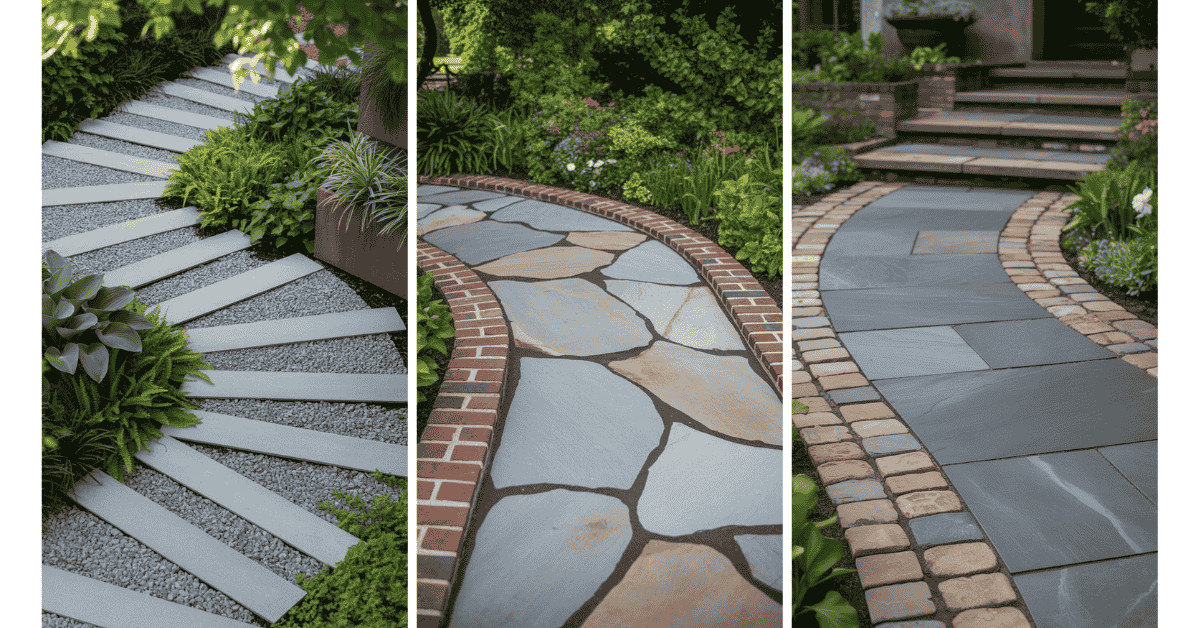
I’ve always believed that a well-designed garden pathway does more than just connect point A to point B. It sets the tone for your entire outdoor space, guides visitors through your landscape, and adds significant curb appeal to your property.
Whether you’re working with a sprawling backyard or a modest side yard, the right pathway can completely transform how you experience your garden.
In this article, I’ll share 19 creative pathway ideas that range from budget-friendly DIY projects to more elaborate designs. Each option brings its own character and charm, so you’re sure to find something that matches your style and skill level.
1. Geometric Gravel with Pavers
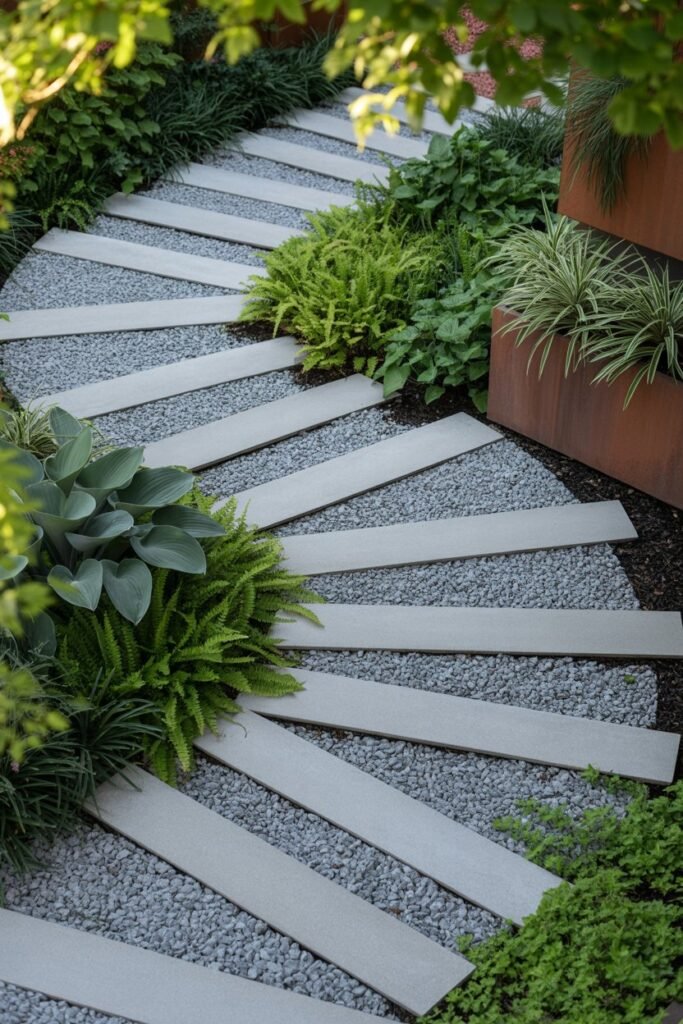
I love how a staggered, geometric gravel walkway creates visual interest while remaining functional. By combining gravel with strategically placed pavers, you create nooks and crevices that give your pathway dimension and character.
The beauty of this design lies in its versatility. You can add potted plants along the edges to soften the geometric lines, or keep it minimal for a more contemporary feel. The gravel provides excellent drainage, making this an ideal choice for areas that see heavy rainfall.
2. Square Stepping-Stones in Mulch
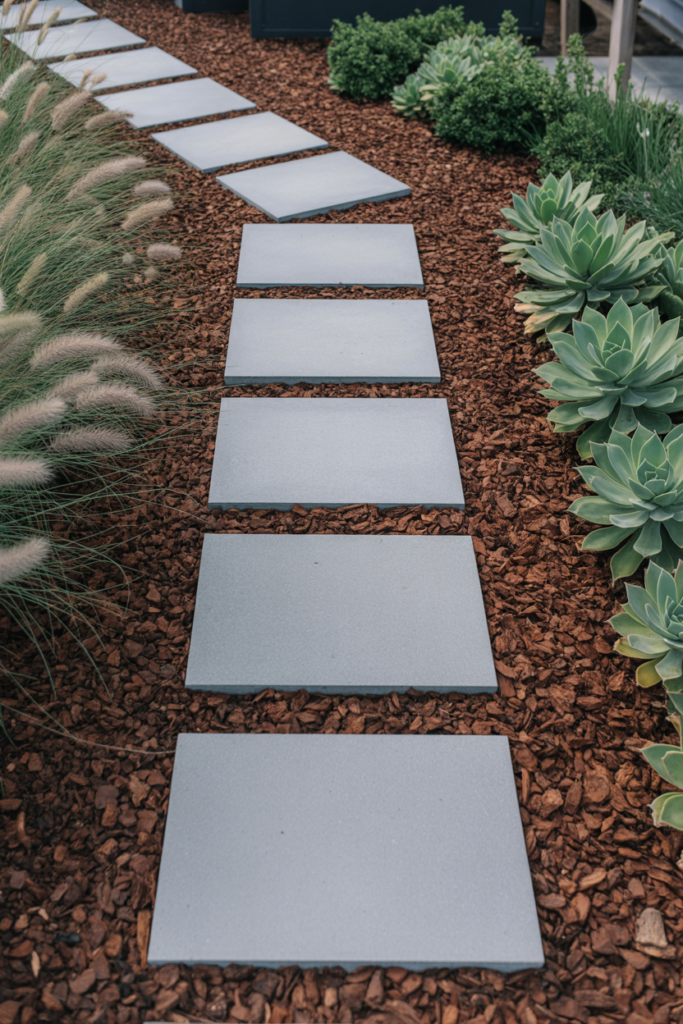
When I want to create a modern, clean-lined pathway, I turn to square stepping-stones nestled in mulch. This combination offers a sleek aesthetic that works beautifully with contemporary landscaping.
The mulch base makes installation straightforward and provides a soft, natural backdrop that lets the geometric pavers shine. I recommend flanking this type of path with succulents and ornamental grasses to enhance the modern look. The contrast between the structured stones and flowing plants creates a balanced, eye-catching design.
3. Classic Flagstone with Brick Border
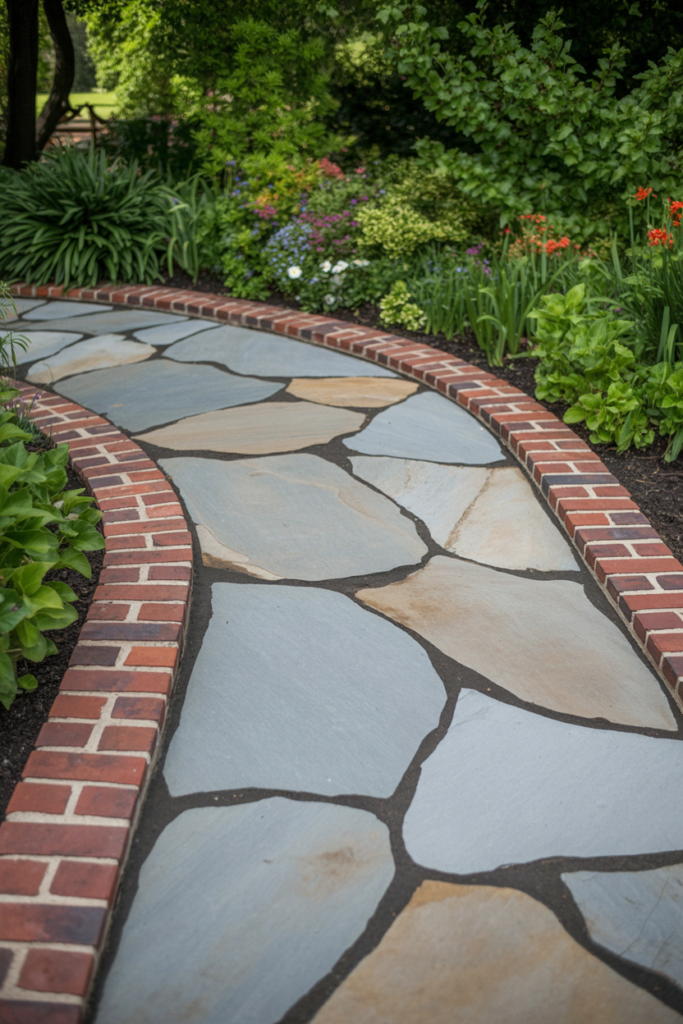
There’s something timeless about flagstone paths, and adding a red brick border takes them to the next level. I find this combination creates a relaxed yet defined look that never goes out of style.
The flagstone’s organic shapes give your pathway character, while the brick border provides structure and keeps everything in place. This design is surprisingly easy to maintain, and the natural color variations in both materials ensure your path looks beautiful year after year.
4. Narrow Gravel Through Lush Landscaping
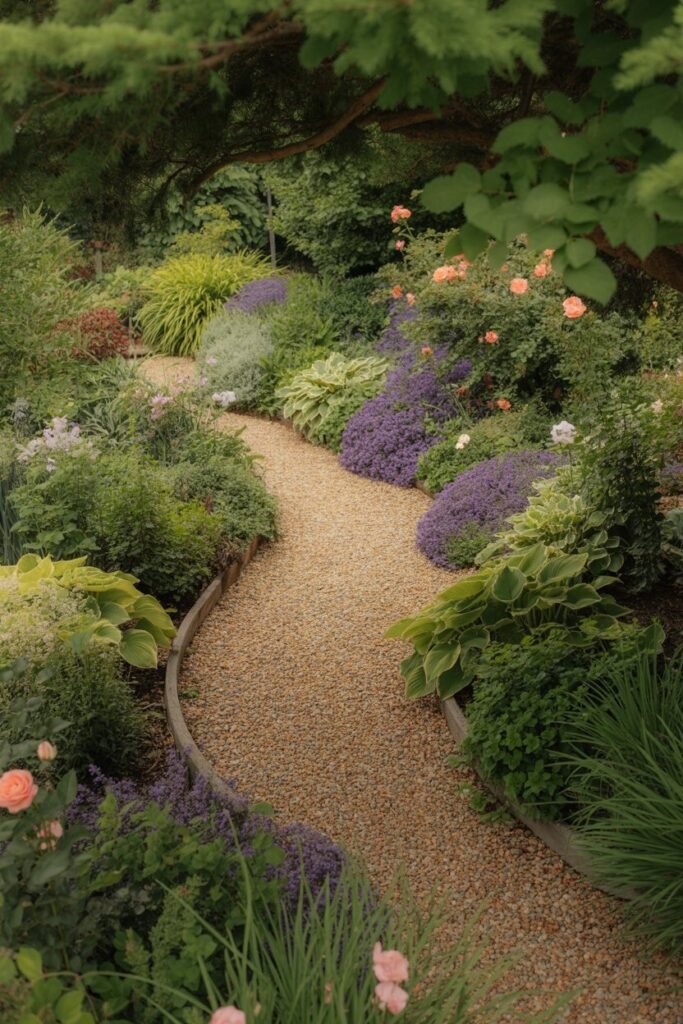
I’m a big advocate for gravel pathways when you want your plants to be the star of the show. A narrow gravel path provides the necessary function while letting your flowers and foliage take center stage.
This is one of my favorite DIY-friendly options because it’s both affordable and forgiving to install. The gravel naturally settles between your plantings, creating a cohesive look that feels intentional rather than constructed. Plus, maintenance is minimal—just occasional raking to keep it looking fresh.
5. Grass-Between Stepping-Stones
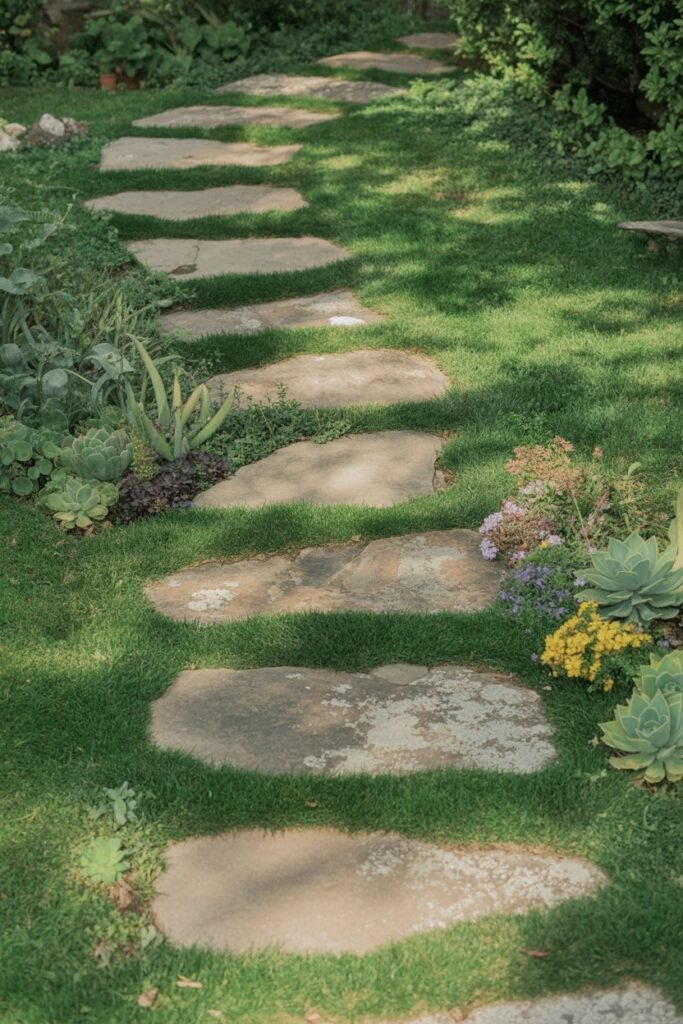
Nothing says “natural garden” quite like stepping-stones with grass growing between them. I find this approach creates a softer, more organic feel compared to solid pathways.
The grass fills in naturally over time, and you can enhance the look by adding low-growing plants like succulents in strategic spots. This design works particularly well in informal garden settings where you want the pathway to blend seamlessly with the surrounding landscape rather than stand out as a separate feature.
6. Large Unhewn Stone Stairs
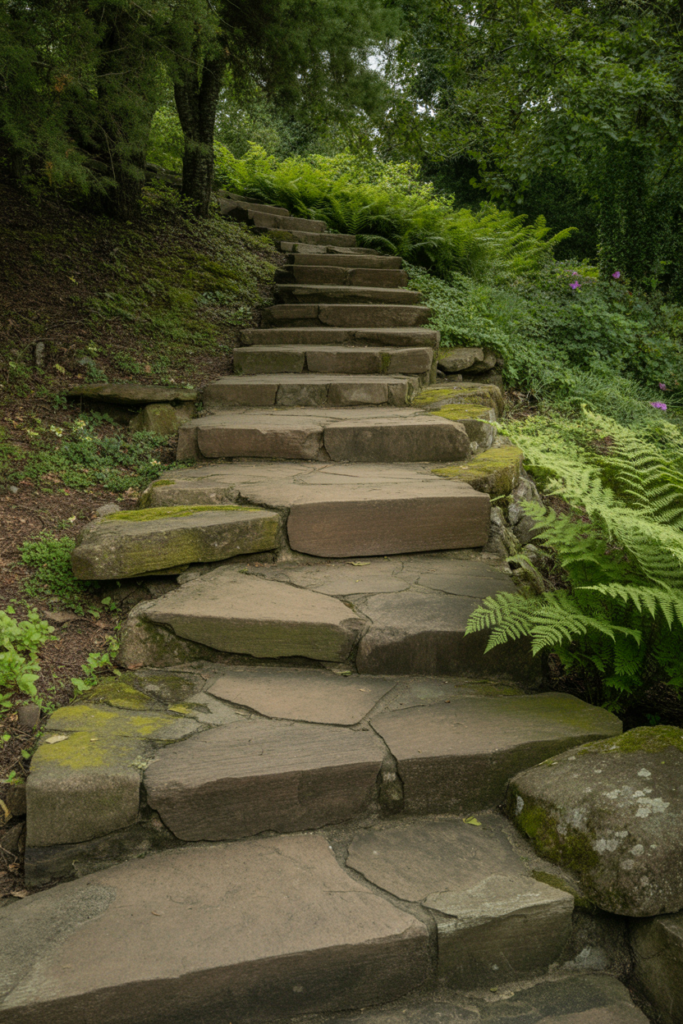
When I’m working with sloped terrain, I turn to large unhewn stones for both pathways and stairs. These create a natural, forest-like setting that feels like it’s always been part of the landscape.
The irregular shapes and natural textures of unhewn stones bring an organic quality that’s hard to achieve with manufactured materials. While this option requires more planning and potentially professional installation, the result is a pathway that looks like a natural outcropping rather than a human addition.
7. Flagstone with Italian Cypress
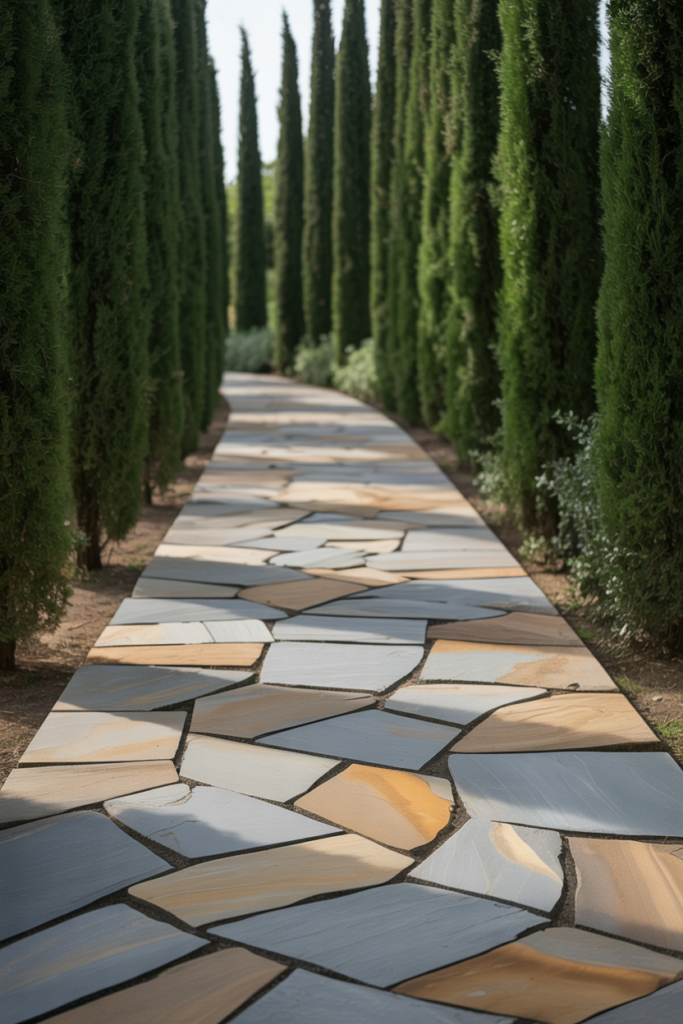
I’ve seen how an intricate flagstone path can transform a side yard into an elegant transition space. When you line it with Italian cypress trees, you create a sense of grandeur and formality.
The staggered stonework pattern is key here—it keeps narrow pathways from feeling cramped or claustrophobic. The vertical lines of the cypress trees draw the eye upward and make the space feel larger, while the irregular flagstone pattern adds visual interest at ground level.
8. Irish Moss Between Flagstones
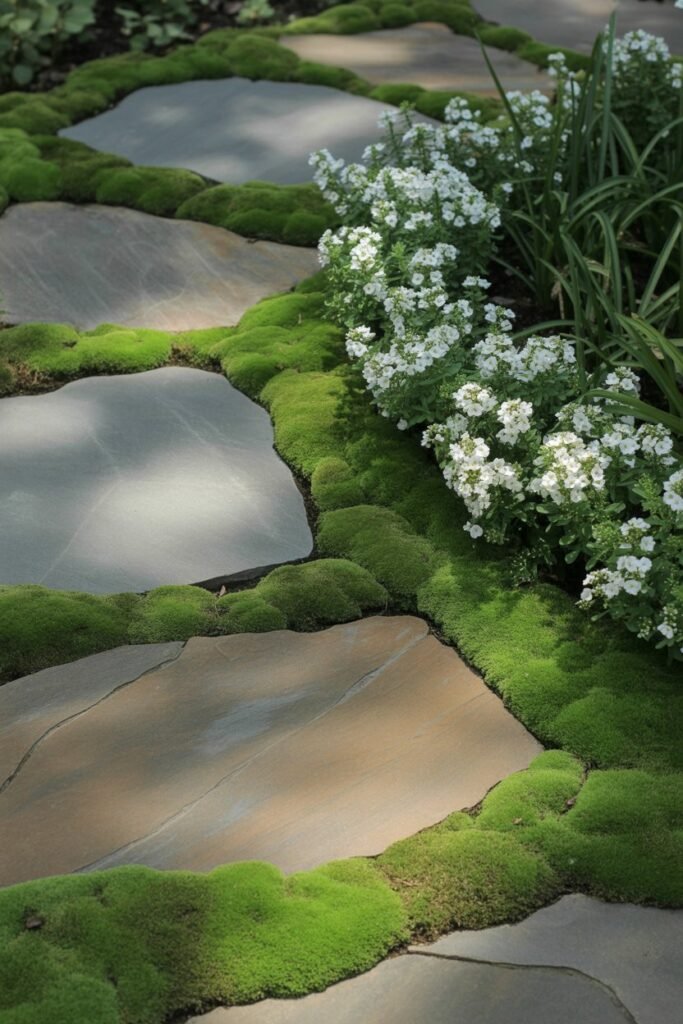
One of my favorite ways to soften a flagstone path is by filling the gaps with Irish moss. This low-growing plant creates a lush, green carpet that beautifully contrasts with the stone.
I often pair this with a longer bed of alyssum twisting along the walk for added color and fragrance. The moss stays low and doesn’t require mowing, making it a practical choice. It also handles foot traffic reasonably well, though I recommend keeping it to moderate use.
9. Cobblestone Diamond Pattern
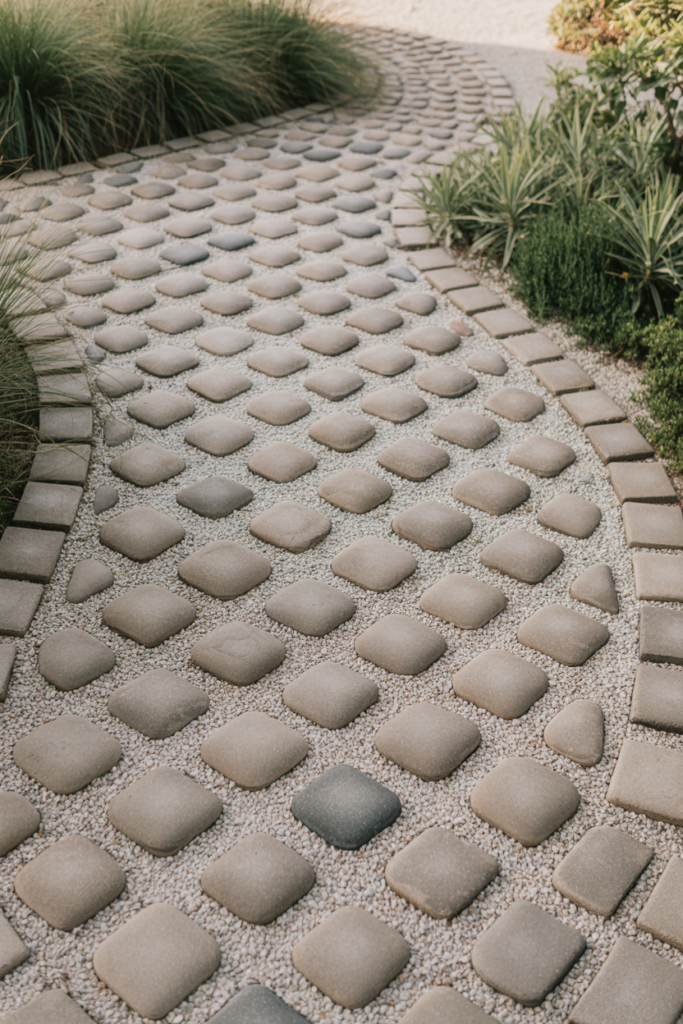
For coastal properties or homes with a beachy vibe, I love cobblestones laid in a lattice pattern with gravel fill. This design has a timeless quality that works with both traditional and contemporary architecture.
The diamond pattern creates visual movement that draws visitors forward along the path. The gravel filling between the cobblestones provides excellent drainage—crucial for areas near water or regions with heavy rainfall.
10. Diagonal Pavers with Dwarf Mondo Grass
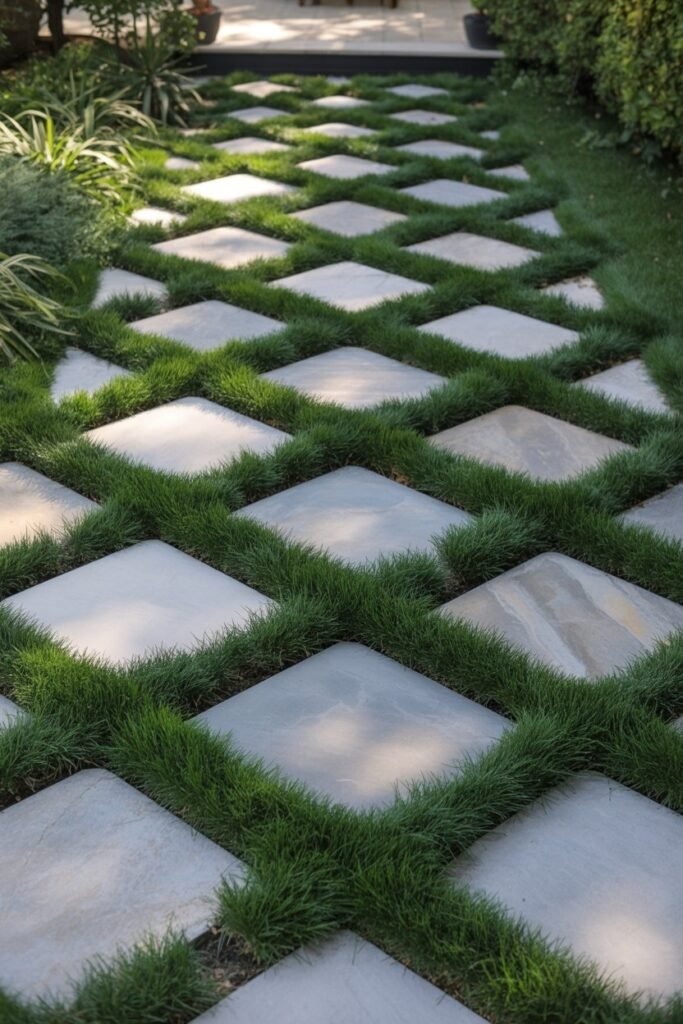
I use pavers set on the diagonal when I want to create visual interest and make a space appear larger. The diamond pattern naturally draws the eye toward your home’s entrance.
Planting dwarf mondo grass between the pavers emphasizes this pattern while adding a soft, living element. The grass stays compact and requires minimal maintenance, making this an attractive choice for busy homeowners who want style without constant upkeep.
11. Bluestone Steppers on Stone Dust
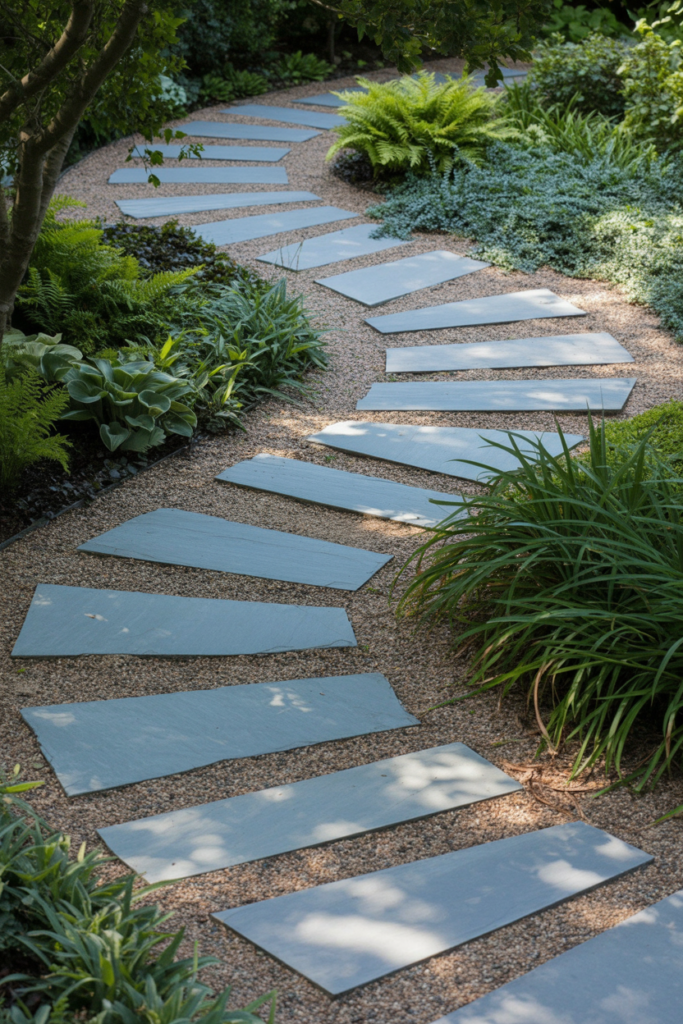
When I want to create gentle curves that spark curiosity, I use bluestone steppers on a bed of stone dust. This combination offers both functionality and aesthetic appeal.
The subtle curves invite exploration and make the journey through your garden more interesting.
Surrounding plantings naturally soften the path edges, creating a seamless transition between the walkway and your garden beds. The stone dust base is stable yet allows for easy adjustments if needed.
12. Jarrah Timber Over River Stones
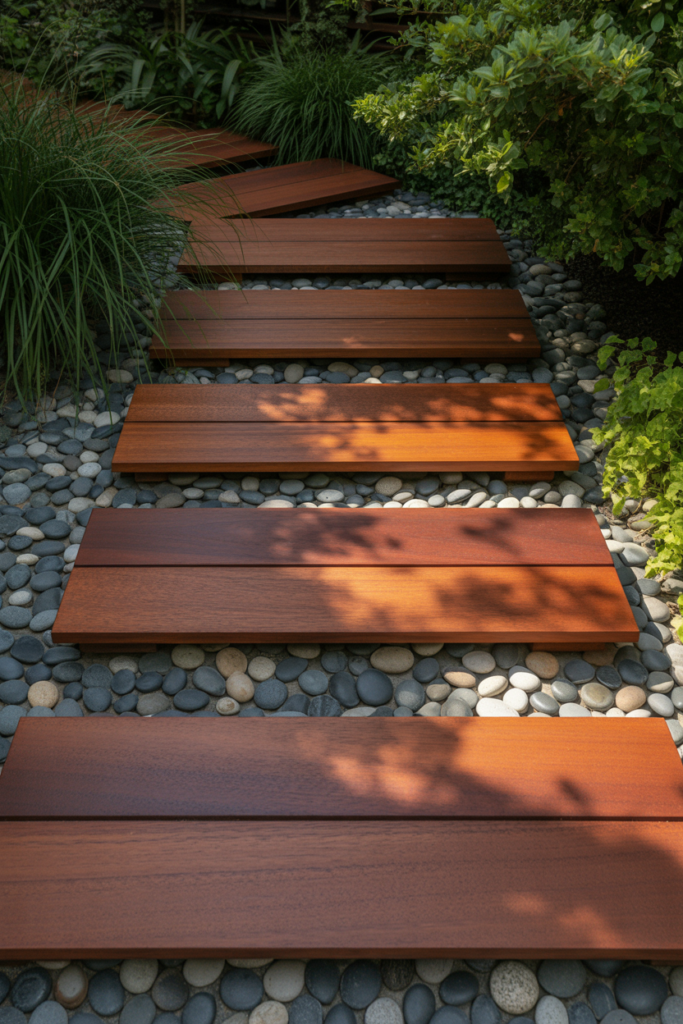
I’m always impressed by the warmth that wood brings to outdoor spaces. A jarrah timber walkway laid over natural river stones creates a beautiful contrast of textures and colors.
This eucalyptus timber is naturally durable and weather-resistant, making it ideal for outdoor use. The river stones beneath provide drainage and add another layer of natural beauty. I find this combination works exceptionally well in gardens with a contemporary or Asian-inspired aesthetic.
13. Cemented Flagstone with Arbor
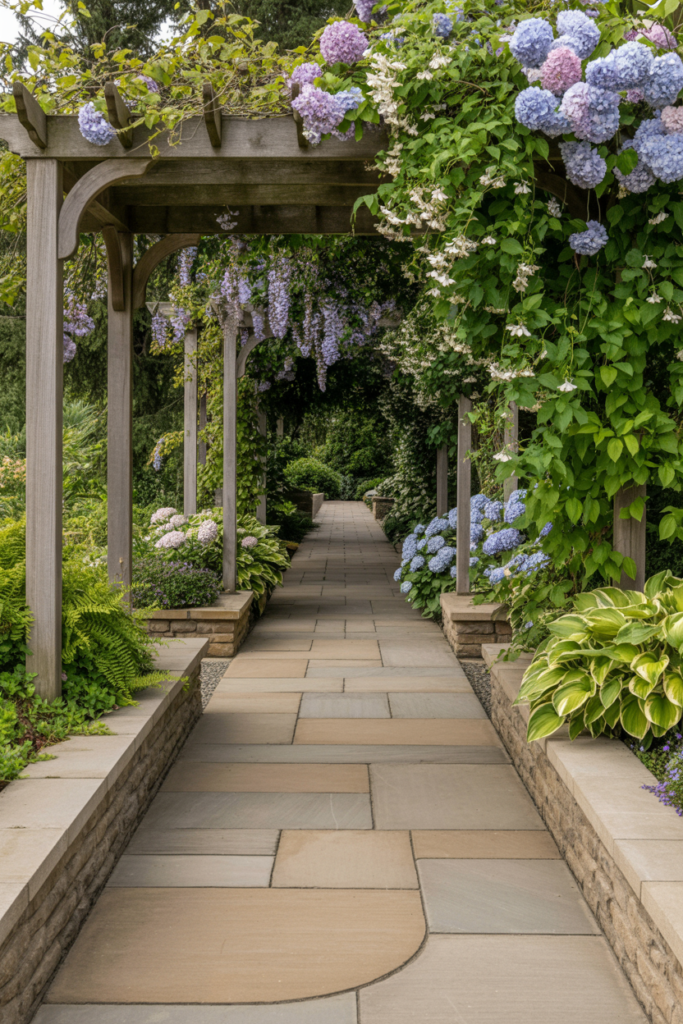
When I want to add formality and elegance to a colorful garden, I turn to cemented flagstone pathways with matching retaining walls. Adding arbors covered in clematis and jasmine takes this to another level.
The permanence of cemented flagstone provides structure, while the flowering vines soften the look and add seasonal interest. Surrounding the path with hydrangeas, hostas, and ferns creates layers of texture and color that make the journey through your garden truly special.
14. Slate with Cobblestone Border
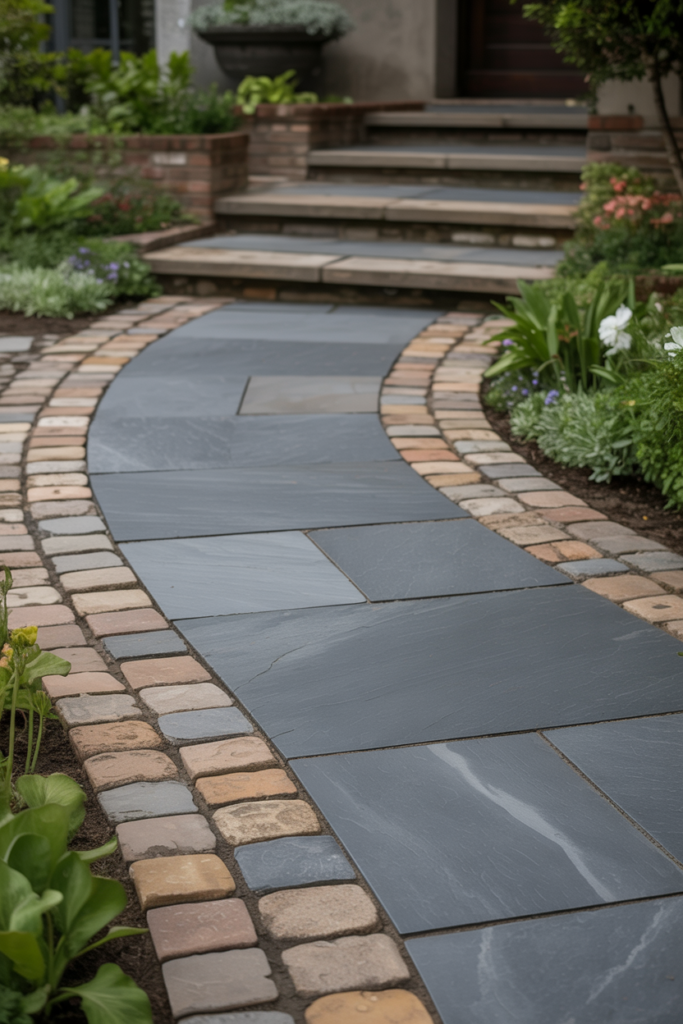
I love how cobblestone borders can tie a pathway into the overall architecture of a home. When your entrance features cobblestones, extending them to the stair risers and using them to outline slate-tile walkways creates a cohesive, intentional design.
The combination of materials adds visual interest while maintaining a unified aesthetic. The cobblestones provide definition and structure, while the slate offers a smooth walking surface.
15. Builder-Grade Pavers with Irish Moss
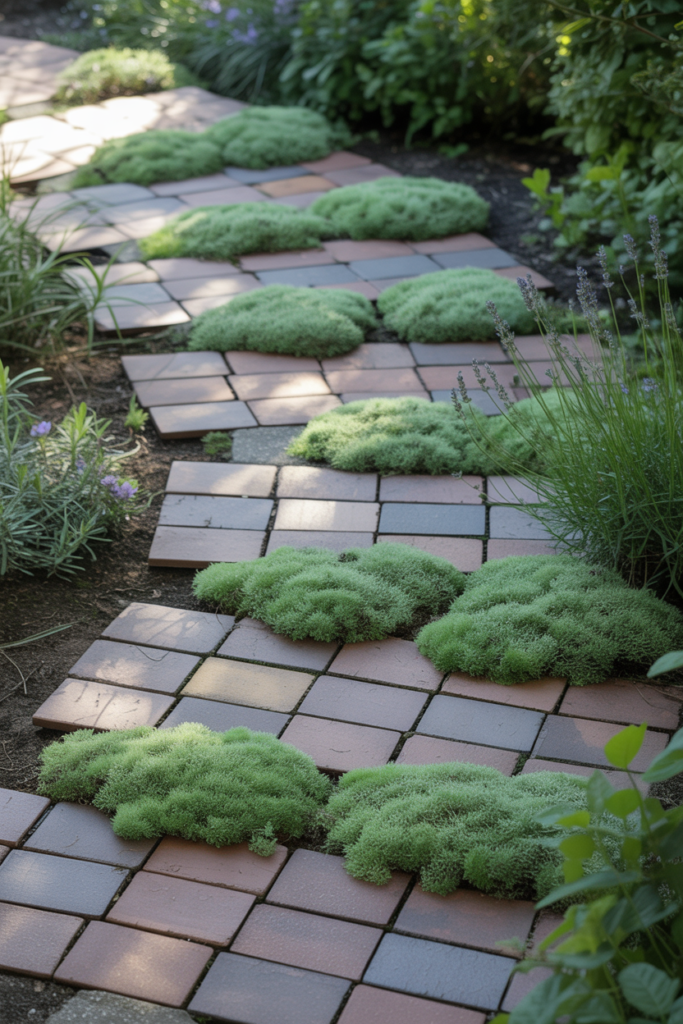
You don’t need expensive materials to create a beautiful pathway. I’ve seen basic builder-grade pavers look absolutely stunning when laid in a staggered pattern and intertwined with Irish moss, lavender, and other soft-textured plants.
The key is in the layout and the plantings. The staggered pattern adds visual interest, while the soft plants growing between and around the pavers create a romantic, cottage-garden feel. This proves that thoughtful design matters more than material cost.
16. Stone and Gravel Combination
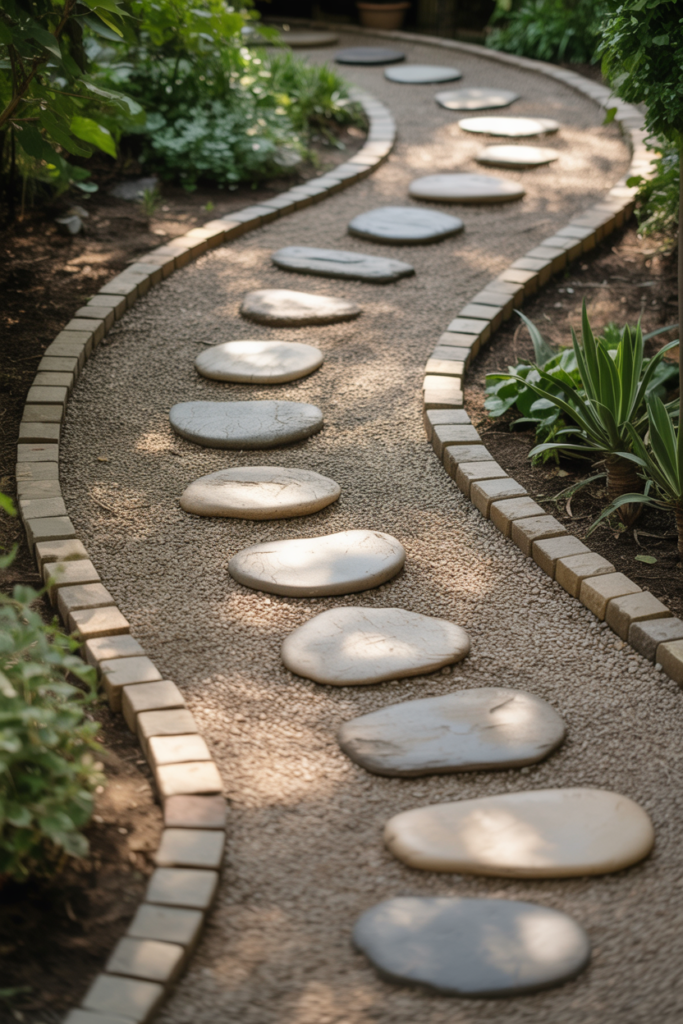
When I want to create contemplative pauses along a pathway, I use a traditional gravel path dissected with randomly placed stepping stones. This provides landing spots where visitors naturally stop to look around.
Stone edging keeps the gravel contained and provides clean lines. The random placement of stepping stones feels organic rather than forced, encouraging a slower, more mindful journey through your garden.
17. Bluestone and Brick Diamonds
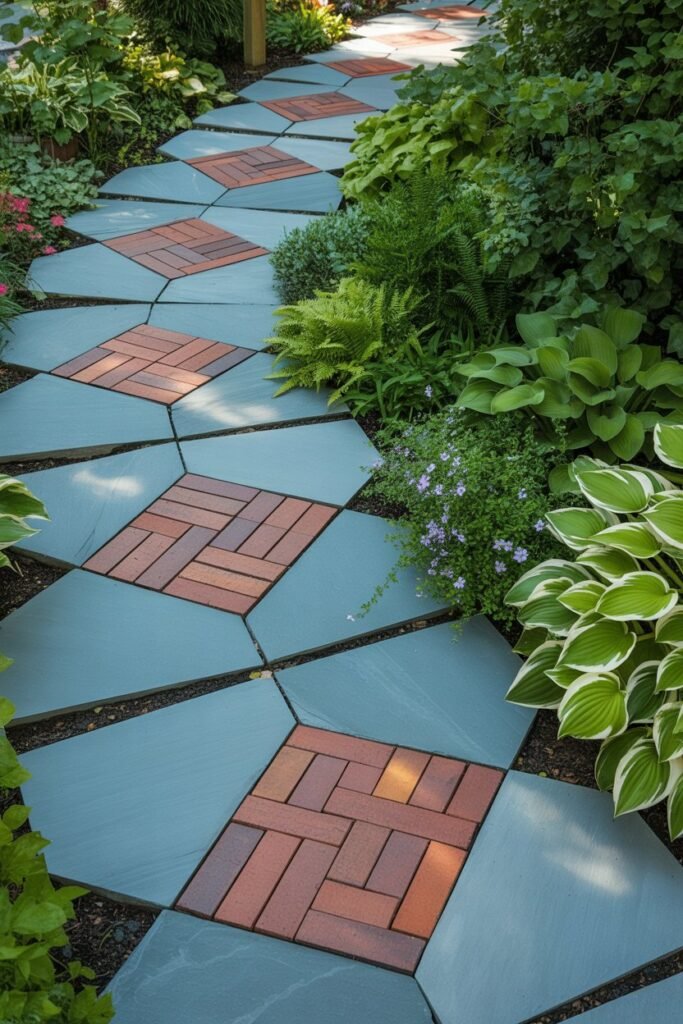
I turn to Pennsylvania bluestone-and-brick steppers when I want to make a space appear larger. Turning them on the diagonal creates this illusion while providing more room for plantings.
The combination of materials adds visual interest through both color and texture contrast. The brick diamonds break up the expanse of bluestone, creating rhythm and movement along the path.
18. Boxwood and Brick Checkerboard
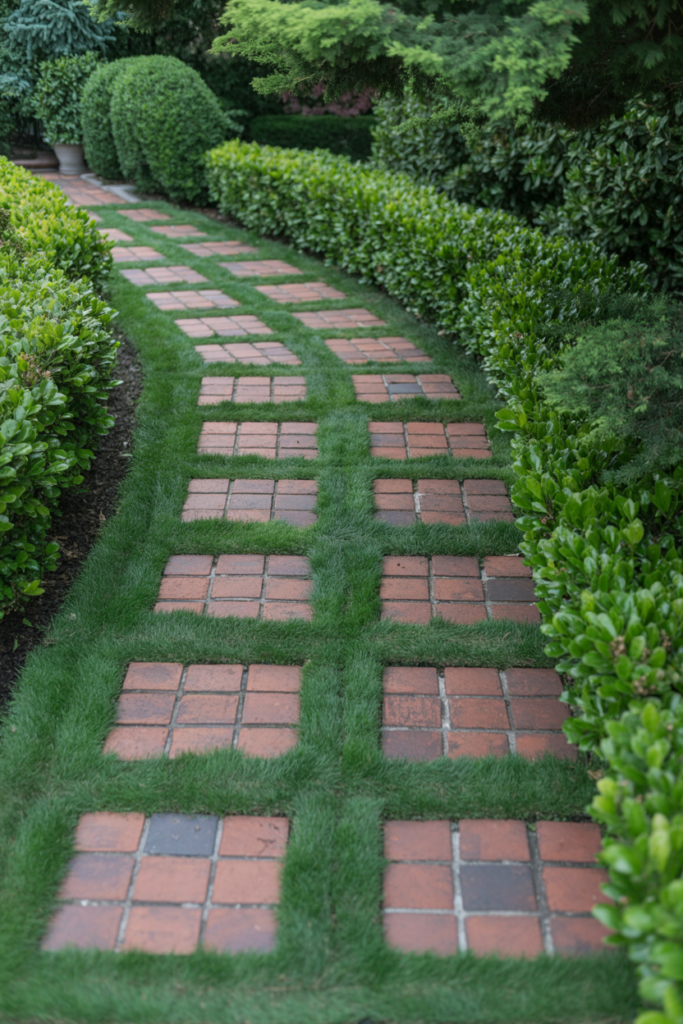
One of my favorite formal-yet-playful designs uses square brick stepping stones in a checkerboard pattern flanked by boxwood shrubs. This creates an engaging composition that feels both structured and whimsical.
The boxwood provides year-round greenery and structure, while the open squares of lawn or ground cover between the bricks keep the look from feeling too rigid. This design works particularly well for side yards where you want to create interest in a narrow space.
19. Stamped Concrete with Variation
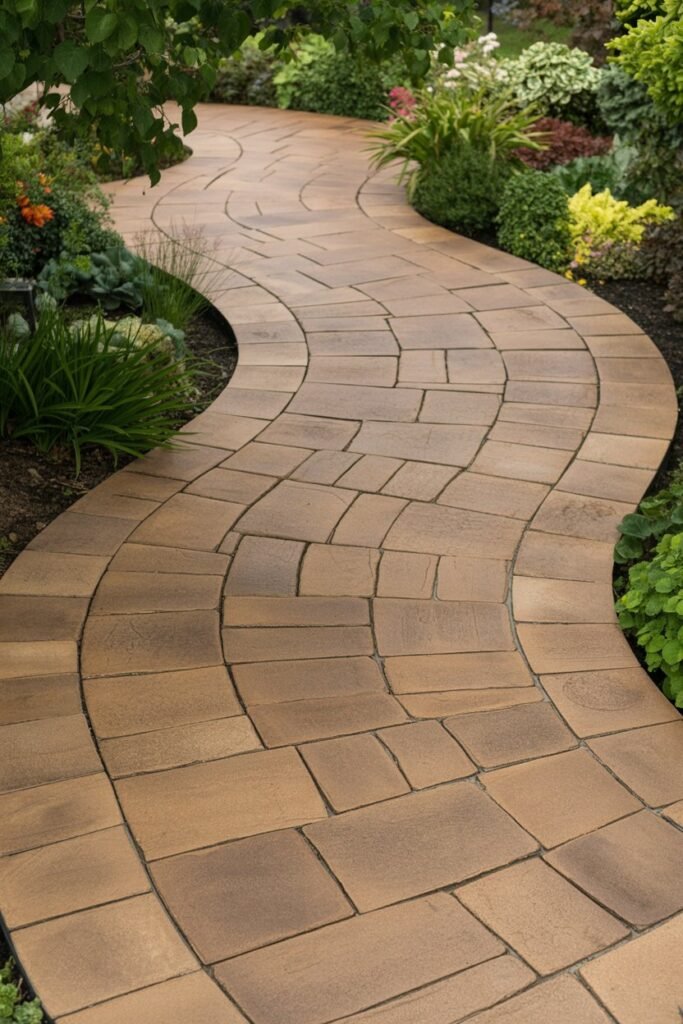
I appreciate how stamped concrete has evolved beyond uniform patterns. By varying the size of the “bricks” and employing subtle curves, you create a more visually interesting pathway that doesn’t look mass-produced.
This option offers durability and relatively low maintenance while still providing custom aesthetics. The key is in the details—choosing a pattern that complements your home’s style and ensuring proper installation for longevity.
Conclusion
The perfect garden pathway does more than guide your steps—it enhances your entire outdoor experience.
Whether you’re drawn to the formal elegance of flagstone with brick borders, the natural charm of grass-between stepping-stones, or the coastal appeal of crushed oyster shells, there’s a pathway style that will bring your garden vision to life.
I encourage you to consider your home’s architectural style, your landscape’s character, and how you actually use your outdoor space. A pathway should feel natural and purposeful, not forced or purely decorative.
Ready to transform your garden with a beautiful new pathway? Start by evaluating your space and choosing a design that speaks to you.
